Archive | Blog RSS feed for this section
Finance sector development
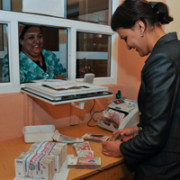 Industry and trade, Regional cooperation and integration
Industry and trade, Regional cooperation and integration
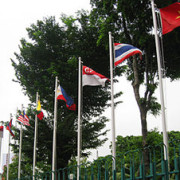 Industry and trade
Industry and trade
 Finance sector development
Finance sector development
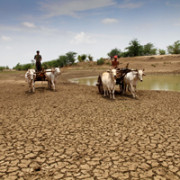 Industry and trade
Industry and trade
 Economics, Finance sector development
Economics, Finance sector development
 Economics
Economics
 Energy, Environment
Energy, Environment
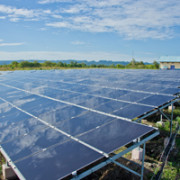 Agriculture and natural resources
Agriculture and natural resources
 Industry and trade
Industry and trade
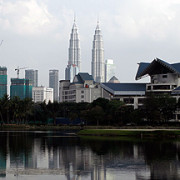
Why do we need financial education in Asia?

This article assesses the case for promoting financial education in Asia. It argues that the benefits of investing in financial education can be substantial. Data are limited, but indicate low financial literacy scores for selected Asian countries. As economies develop, access to financial products and services will increase, but households and small and medium-sized enterprises (SMEs) need to be able to use the products and services wisely and effectively. More effective management of savings and investment can contribute to overall economic growth. Moreover, as societies age and fiscal resources become stretched, households will become increasingly responsible for their own retirement planning. Asia’s evolving experience suggests that more national surveys of financial literacy are needed and that coherent, tailored national strategies for financial education are essential for success.
AEC is due—but what about institutions?

A pressing policy question facing Association of Southeast Asian Nations (ASEAN) leaders at their summit in April 2015 and beyond is whether the ASEAN Economic Community (AEC) can be sustained without more effective institutions. This article explores the link between achieving the AEC agenda and institutional effectiveness. To remedy the implementation gridlock, it proposes reforms to the leadership and the technical level of ASEAN bodies, prioritization of new institutions, an effective monitoring mechanism, and an empowered ASEAN Secretariat.
Plurilateral trade agreements: an overlooked but powerful force for international trade opening for Asia?

After over a gloomy decade of inconclusive talks, a small but important step was taken in early December 2014 to finish the Doha Round negotiations of the World Trade Organization (WTO). In 2015 and beyond, actions to arrive at a Doha Round Agreement should be accompanied by embracing new plurilateral trade agreements within the WTO. This move can benefit growth and development in Asia. This article reviews the outlook for the WTO Doha Round and examines the case for plurilateral trade agreements for Asia.
The financial sector needs to be driving the green transformation

Many Asian countries have set ambitious targets for climate change mitigation. Governments all over the region are devising green growth strategies, aiming to reconcile economic growth with low carbon emissions as well as trying to limit other forms of environmental degradation such as soil, water, and air pollution. What is needed is no less than a “green transformation” to put green growth at the heart of development (OECD 2013). To achieve such a green transformation, large investments will be needed in renewable energy generation, energy efficiency, smart transportation networks, and many other areas that will help the shift toward sustainable patterns of production and consumption.
Will Asian investment follow trade with Latin America?

Latin America is firmly on the economic radar of Asia in the post-global financial crisis world economy. Both Asia and Latin America have grown faster than the world economy. As Figure 1 shows, during 2009–2013, annual average growth was 4.6% in Asia, 2.4% in Latin America, and 1.9% for the world economy. Trade between the two regions has grown significantly, reaching a historic high of over half a billion dollars in 2014 (see Figure 2). This figure is projected to increase to $750 billion by 2020. Increased trade has prompted a flurry of diplomatic activity. In July 2014 the President of the People’s Republic of China (PRC), Xi Jinping, visited Argentina, Brazil, Cuba, and Venezuela. Shortly afterward, Japanese Prime Minister Shinzo Abe visited Brazil, Chile, Columbia, and Mexico. Pledges of trade, foreign direct investment (FDI) and foreign aid accompanied these high-level visits.
Five bond market trends to watch out for in 2015

As 2015 gathers pace, the world seems to be entering a more uncertain and unpredictable phase. With the end of the quantitative easing by the Federal Reserve, we are entering an era of tighter global liquidity. However, this might be offset to a certain extent by more aggressive monetary policy actions from the Eurozone and Japan. The plunge in oil and other commodity prices should help reduce inflationary expectations but could also presage a weaker economic environment. All these point to a more volatile environment, making it a more challenging year for Asian bond markets.
TTIP—is the EU really interested in an “economic NATO”?

Negotiations between the European Union (EU) and the United States (US) on the Transatlantic Trade and Investment Partnership (TTIP) are currently dragging on without a clear time target—no wonder in view of the highly complex topics to agree on. But nevertheless, international speculation is running high about the potential economic and geostrategic implications of the TTIP for the EU’s economic relations with Asia, and the People’s Republic of China (PRC) in particular. Some people even claim it to be the foundation of an “economic NATO” or consider it “a response to the rise of [the PRC]
Green investment in Asian cities: Lessons from the People’s Republic of China, Indonesia, and Japan

The concept of “green growth” has been connected to the “green economy for sustainable development and poverty reduction,” which is the first theme of the Rio+20 United Nations Conference on Sustainable Development (UNCSD). In addition, making cities and human settlements inclusive, safe, resilient, and sustainable is becoming one of the 17 sustainable development goals proposed by the Open Working Group on Sustainable Development Goals targeted to replace the United Nations Millennium Development Goals which will expire in 2015.
New Zealand: A farming and services growth model for Asia?

The story of East Asia’s rapid growth includes ample reference to the export of technologically complex manufactured goods, such as cars and computers. This is the model that has characterized Japan, the Republic of Korea, and Taipei,China. It also provides an example for Asia’s current middle-income countries, including the People’s Republic of China (PRC). They need to develop high-value manufacturing, the argument goes, churning out domestically designed goods or linking into global production networks. Failure to move up the value chain may result in a country getting stuck in the middle-income trap (Zhuang et al. 2012).
SME internationalization through global value chains and free trade agreements: Malaysian evidence

Regionalism in Asia led by global value chains (GVCs) and free trade agreements (FTAs) has increasingly put the spotlight on small and medium-sized enterprises (SMEs). As one of Asia’s success stories in internationalization, Malaysia offers interesting insights. Drawing on research on Malaysian enterprises, this article examines the characteristics of SMEs which have successfully internationalized by participating in GVCs and FTAs and explores their policy implications. It seeks to improve our understanding of the internationalization of SMEs in Asia and contribute to the scant literature.


Search
Subscribe / Connect to Asia Pathways
Subjects
- Agriculture and natural resources
- Blog
- Capacity development
- Climate change
- Economics
- Education
- Energy
- Environment
- Finance sector development
- Gender
- Governance and public sector management
- Health
- Industry and trade
- Information and Communications Technology
- Infrastructure
- Miscellaneous
- Population
- Poverty
- Private sector development
- Regional cooperation and integration
- Sanitation
- Social development and protection
- Transport
- Uncategorized
- Urban development
- Video Blog
- Water
Recent Posts
- Artificial intelligence: A new driver for inclusive growth and development?
- Increasing trust in cross-border e-commerce and artificial intelligence
- Enhancing access to maternal and newborn healthcare in developing Asia
- Can electric vehicles lead the way to a sustainable future?
- Mitigating climate-related sovereign risk to accelerate action on the climate emergency




Recent Comments